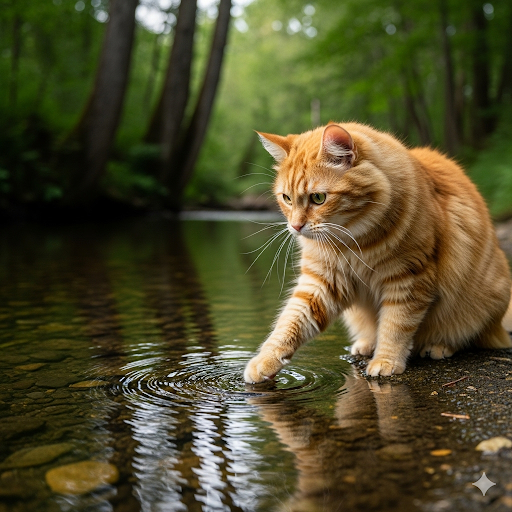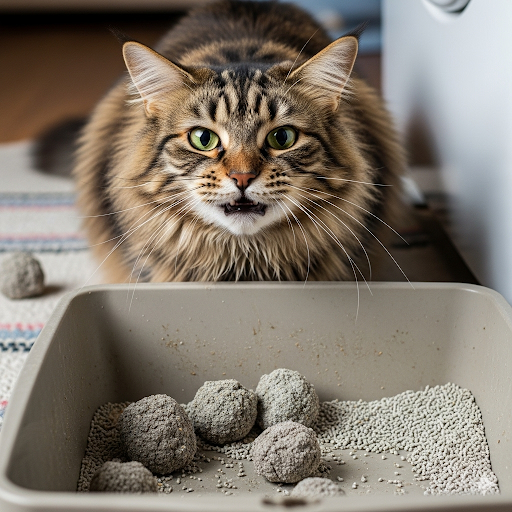When you visit a pet shop, you're often faced with the cuteness of kittens, ready to be adopted into loving homes. But what happens to those cats that don't get sold? The reality can be a bit more complicated than many people realize. Whether they’re older cats, less "marketable" kittens, or simply those who haven't found their perfect match, the fate of unsold cats varies widely depending on the policies of the pet shop or breeder and the availability of alternative options.
In this blog, we'll explore what happens to these unsold cats and the ethical considerations surrounding their treatment.
1. Return to the Breeder
In many cases, pet shops will simply hold on to unsold cats for as long as they can. For breeders, this might mean keeping the cats as part of their breeding program or as personal pets. For pet shops, it can mean keeping older kittens or adult cats in the store until they find a home, sometimes in less-than-ideal conditions.
While some pet shops provide decent care, with regular feedings, clean cages, and socialization, others may house unsold cats in small enclosures with little room to roam or play, leading to stress and behavioral issues. The longer a cat stays in these situations, the more difficult it may become to find a home, especially if they develop fear or aggression due to lack of interaction or poor living conditions.
2. Adoption Programs or Rescue Organizations
In many instances, pet shops or breeders will try to offload unsold cats to adoption programs or rescue organizations. These rescues might take in older kittens or adult cats that didn’t sell, rehome them, and ensure they are given proper care while they wait for a new family. Some pet stores, especially larger chains, may have partnerships with local animal shelters and rescue groups to help find homes for their unsold animals.
Rescue organizations typically have foster homes and networks to place these cats in, giving them the chance to live in a home environment rather than staying in the confines of a pet shop. In some cases, the cat may undergo necessary medical treatment, like vaccinations, spaying or neutering, or socialization, before being put up for adoption.
3. Euthanasia
Sadly, some unsold cats face a much darker fate. If breeders or pet shops are unable to rehome unsold cats and there are no takers, some may opt for euthanasia as a last resort. While this is often a rare and extreme outcome, it remains a possibility in certain situations, particularly when a cat is considered “less desirable” due to age, temperament, or health issues.
This can be especially true in high-volume breeding operations or less ethical breeders, where the emphasis may be more on making money than on animal welfare. Cats that are seen as "unsellable" may be discarded as a way to free up space for new kittens.
4. Live Out Their Lives in Shelters or Sanctuaries
Not every unsold cat is destined for euthanasia or abandonment. Some are fortunate enough to be taken in by no-kill shelters or sanctuaries where they can live out their lives. These organizations often focus on long-term care for animals that are less likely to be adopted, whether due to age, health issues, or behavioral concerns.
For example, some sanctuaries specialize in caring for older or special-needs cats that might not have the same demand as younger, healthier kittens. In these places, cats can live out their lives in a safe and comfortable environment, with their medical and emotional needs met.
5. The Overpopulation Crisis
One of the main reasons that cats—especially older ones and those with special needs—don't get sold in pet shops or by breeders is the overpopulation crisis. Every year, millions of cats are born, and many of them end up in shelters or on the streets. In fact, in many communities, the number of kittens born each year far outpaces the number of homes available to adopt them. This leads to overcrowded shelters, which can struggle to provide proper care, and a high number of euthanasia rates.
Spaying and neutering is a crucial part of addressing this problem, and many organizations encourage responsible pet ownership through low-cost spay/neuter programs. If every pet owner took responsibility for preventing unwanted litters, fewer cats would end up in shelters or breeding programs, and the supply of unsold cats in pet shops and breeders could eventually decrease.
6. Wrong Ownership
Another common fate for unsold cats is that they are given away to friends or family members who may not be fully prepared for the responsibilities of cat ownership. This often occurs when breeders or pet shops are eager to move an unsold cat quickly, and they approach their network of acquaintances to find a home. While the intent may be well-meaning, the reality is that many people may underestimate the long-term commitment of caring for a cat, leading to neglect, behavioral issues, or the cat being abandoned or surrendered back to a shelter. Without proper screening or understanding of what it takes to care for a pet, these well-intentioned adoptions can result in a cycle of instability and stress for the cat.
How To Address This Issue?
- Education and Awareness: As consumers, we have the power to make informed choices. It's crucial for us to educate ourselves about what it takes to be a responsible cat owner. A cat is a long-term commitment, often requiring care for 15 years or more. Ensuring that the new owner understands the responsibilities involved is key to ensuring a successful ownership.
- Encouraging Partnerships: Pet shops and breeders should be encouraged to partner with reputable rescue organizations or local shelters to find suitable homes for unsold cats. Foster programs can also provide a temporary solution while a more permanent home is found.
- Adoption: If you're considering adding a cat to your family, consider adopting from a shelter or rescue organization. It not only saves a life, but it helps to reduce the demand for breeding and the overpopulation problem. Every cat deserves a chance to thrive in a loving home—let’s do our part to make that happen together.



